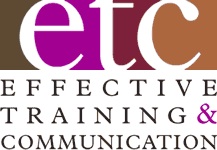A client recently engaged me to create and deliver a workshop for an employee group. During our planning discussion, I recommend not using slides, given the audience, content and objective to create a more lively and engaging discussion. Slides tend to create the opposite impression.
While the client understood, he indicted that they liked slides so that people who couldn’t attend or new hires could review the slides and still gain some content value from the workshop. I indicated that using slides as a potential tool for downstream review or sharing presents an interesting paradox.
Properly designed slides have minimum text … less is more. Think 24 point type, with less than five bullet lines with five words per line or less … and very few of them. Pictures are much more effective. So are easily read charts or graphs
So, effectively designed slides don’t make very good handouts because there’s not enough information there to be of value. Creating detailed slides that would be a useful downstream resource … are very poor slides. Presenters think that one tool can serve two very different purposes – bad idea. The best practices for designing effective slides are different than those for designing effective handouts.
That said, I indicated that I’d create a detailed handout for use during the session that could also be posted for future reference. Fortunately, this win-win approach made good sense to him. And they’ll also avoid inflicting another dose of ‘Death by PowerPoint’ on their employees, not that I would do that to begin with. Hey … just sayin’.

